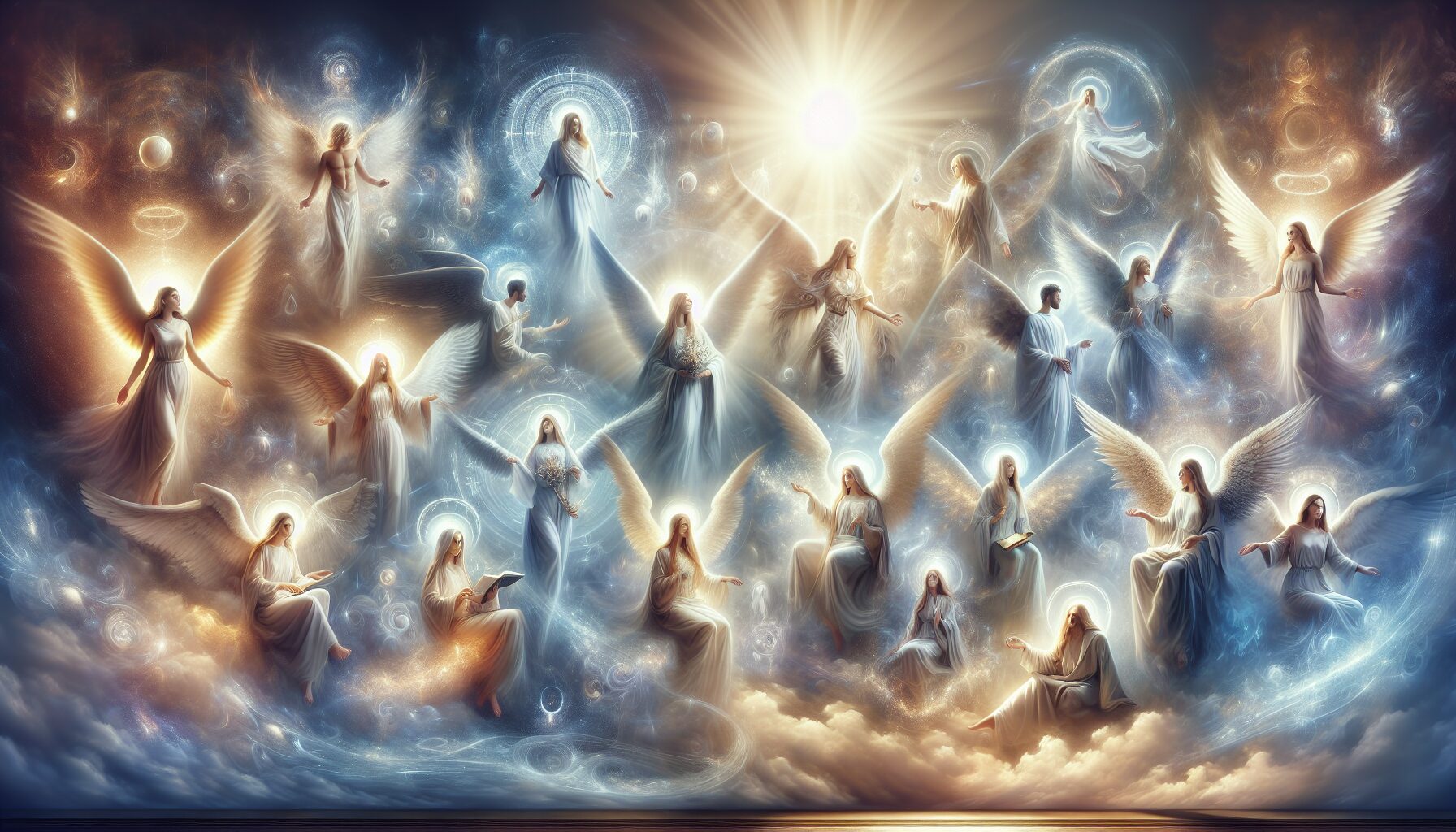The ethereal realm of angels captivates the human imagination, embodying a profound mystical tradition spanning religions and cultures. Angelic beings, often perceived as messengers between the divine and mortal realms, hold key roles in religious texts, art, and spiritual traditions. Exploring the angelic hierarchies unveils a celestial order radiating divine light and purpose.
The Concept of Angelic Hierarchies
The notion of angelic hierarchies was first systematically organized by Pseudo-Dionysius, a Christian theologian and philosopher of the late 5th to early 6th century. In his work, De Coelesti Hierarchia, he described a structured order that categorizes angels into three triads, each consisting of three orders or choirs.
“The theologians have given us the nine angelic names…,” writes Pseudo-Dionysius, drawing from scripture and theological insights (Pseudo-Dionysius, De Coelesti Hierarchia).
The First Triad: Closest to the Divine Throne
- Seraphim: The seraphim are often depicted as fiery beings of pure light, surrounding God’s throne. According to Isaiah 6:2-4, they cry out “Holy, holy, holy” continuously. Their role is to cleanse, illuminate, and move heaven’s flaming love.
- Cherubim: Known for their wisdom and knowledge, the cherubim are guardians of divine secrets. They are often shown as the keepers of the way to the tree of life (Genesis 3:24). Thomas Aquinas described them as “fullness of knowledge” (Summa Theologica, Part 1, Question 108, Article 5).
- Thrones: These angels represent divine justice and authority. Known as the carriers of God’s throne, they help dispense divine judgment. Thomas Aquinas refers to them as angels who maintain a perfect view of God’s work with peace and humility.
The Second Triad: Heavenly Governors
- Dominions: The middle of the nine orders, dominions regulate the duties of lower angels. They oversee nations and large groups, ensuring that the cosmic order is maintained and are sometimes depicted with orbs or scepters.
- Virtues: Charged with bestowing blessings and courage, virtues perform miracles in the world. The apostle Paul refers to them in his Epistle to the Ephesians and Colossians, suggesting their power manifests in miracles (Ephesians 1:21).
- Powers: These angels repel evil and prevent the fall of the world into chaos. Often described as warrior angels, they preserve cosmic order and balance.
The Third Triad: Angels of Our World
- Principalities: Assigned to care for the Earth and its realms, principalities guide and instruct the ruling class and leaders, inspiring them toward ethical and just governance.
- Archangels: Known as the chief messengers, archangels impart revelations and crucial announcements. Among the most famous are Gabriel, Michael, and Raphael. Each takes a significant role across different religious texts and stories.
- Angels: Often referred to as guardian angels, these beings are closest to humanity. They watch over individuals, guiding them toward divine paths.
Influences and Interpretations Across Cultures
The angelic hierarchy’s resonance echoes across cultures and religions. In Jewish mysticism, the Angelic Hosts resonate with the hierarchical framework seen in Kabbalistic traditions, where angels govern different worlds in the Tree of Life structure. In Islam, the Quran references angels as messengers of Allah, aiding prophets and faithful followers.
Art and literature continuously draw inspiration from these celestial hierarchies. Depictions of archangels and seraphim abound in Byzantine, Gothic, and Renaissance art, capturing the mystical aura associated with these divine beings.
The Symbolism and Purpose of Angelic Beings
Angelic hierarchies signify the spiritual ascent toward God, suggesting a cosmic order that mirrors divine principles. Each angelic choir carries specific symbols and purposes that reflect their unique roles within the celestial hierarchy. This hierarchical structure emphasizes themes of order, purity, and spiritual insight, underscoring the transcendental nature of existence beyond the mortal plane.
Contemplation and Modern Mysticism
In contemporary spirituality, the angelic hierarchy continues to be a source of fascination and meditation. Some individuals seek deeper communion with angelic forces, using prayer, meditation, and rituals to connect with these celestial beings. The pervasive influence of angels in modern spiritual practices highlights humanity’s enduring quest for divine knowledge and benevolent guidance.
The mysticism of angelic hierarchies remains a profound testament to the universal quest for understanding and experiencing divinity in its many forms. From their luminous presence in holy scriptures to their revered status in spiritual communities, angels represent an eternal bridge between the earthly and the heavenly, urging us toward a higher plane of consciousness.
In essence, angelic hierarchies speak to the timeless human desire to comprehend the mysteries of the universe, the divine order, and the essence of spiritual existence. As we seek to unravel the celestial tapestry woven within these guardian realms, we’re drawn ever closer to the divine light that guides and inspires us across time and space.

Comments